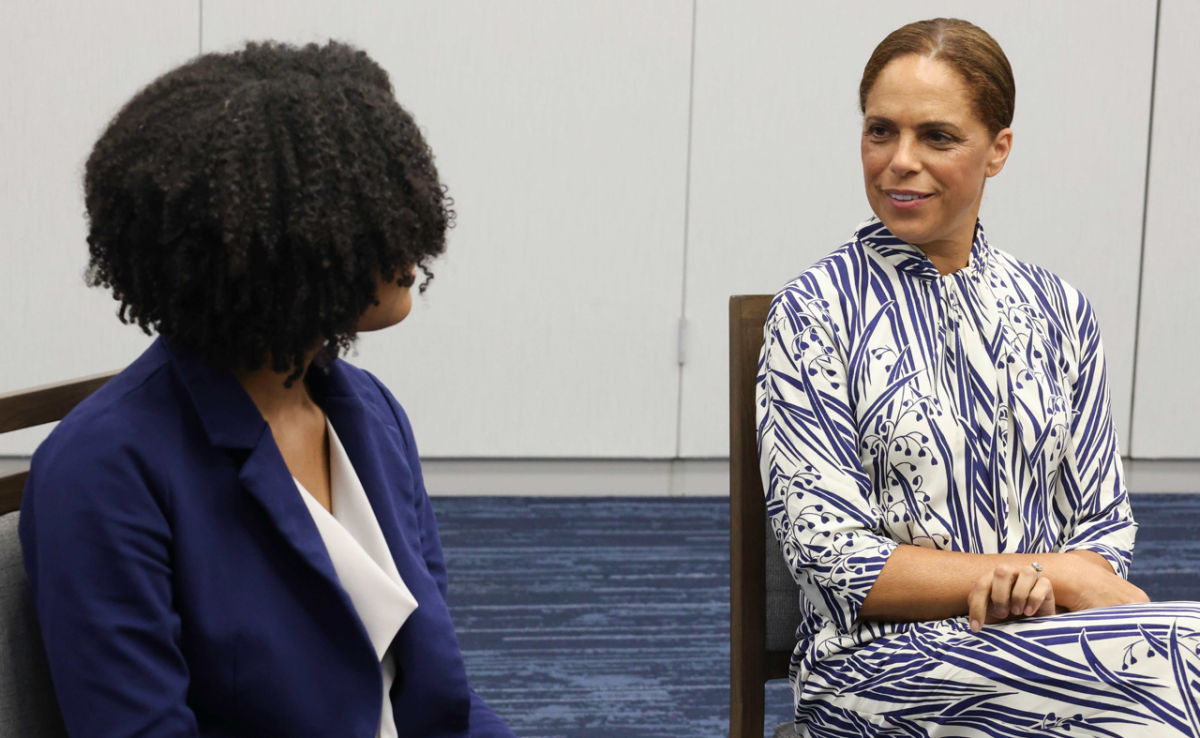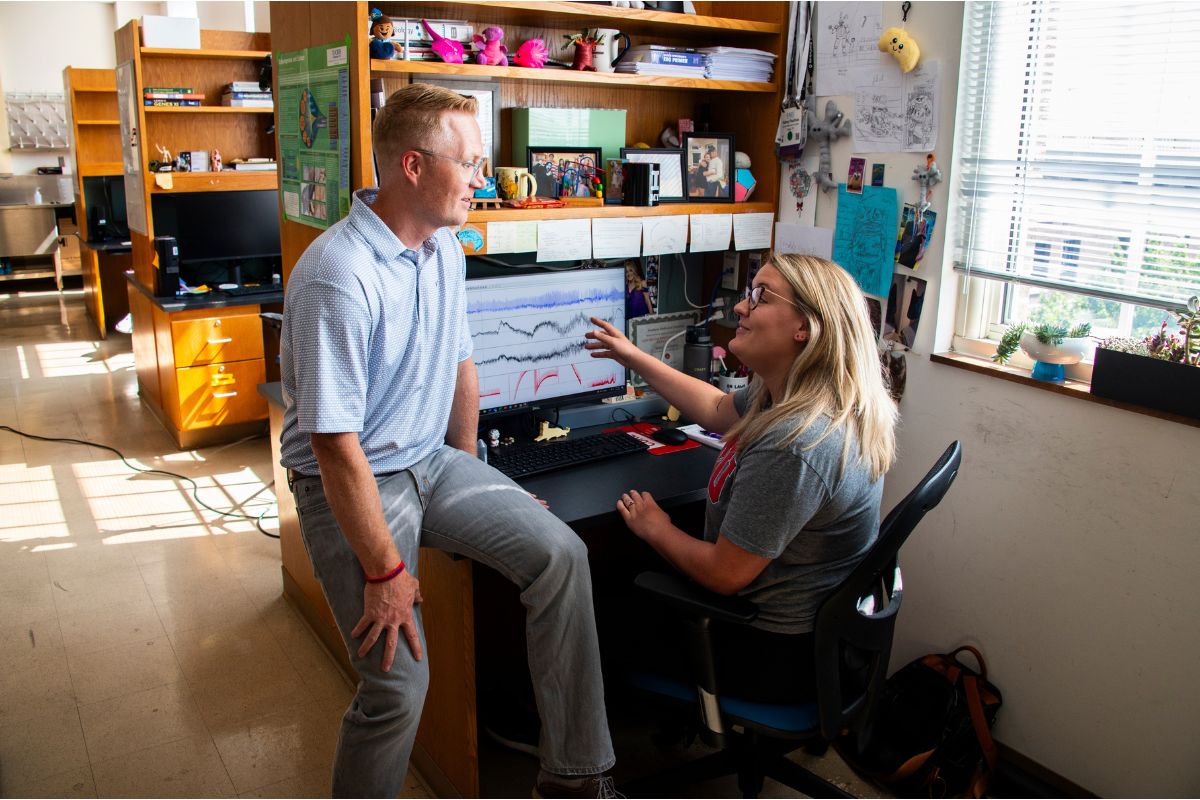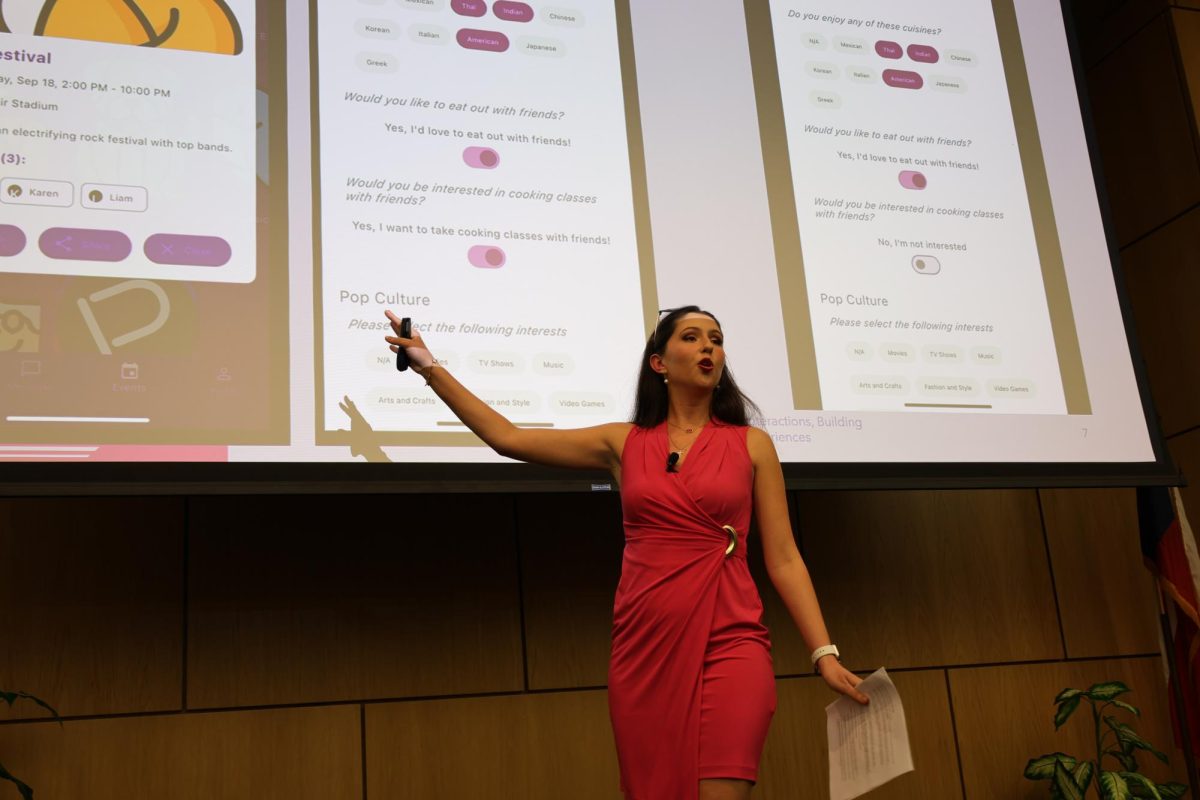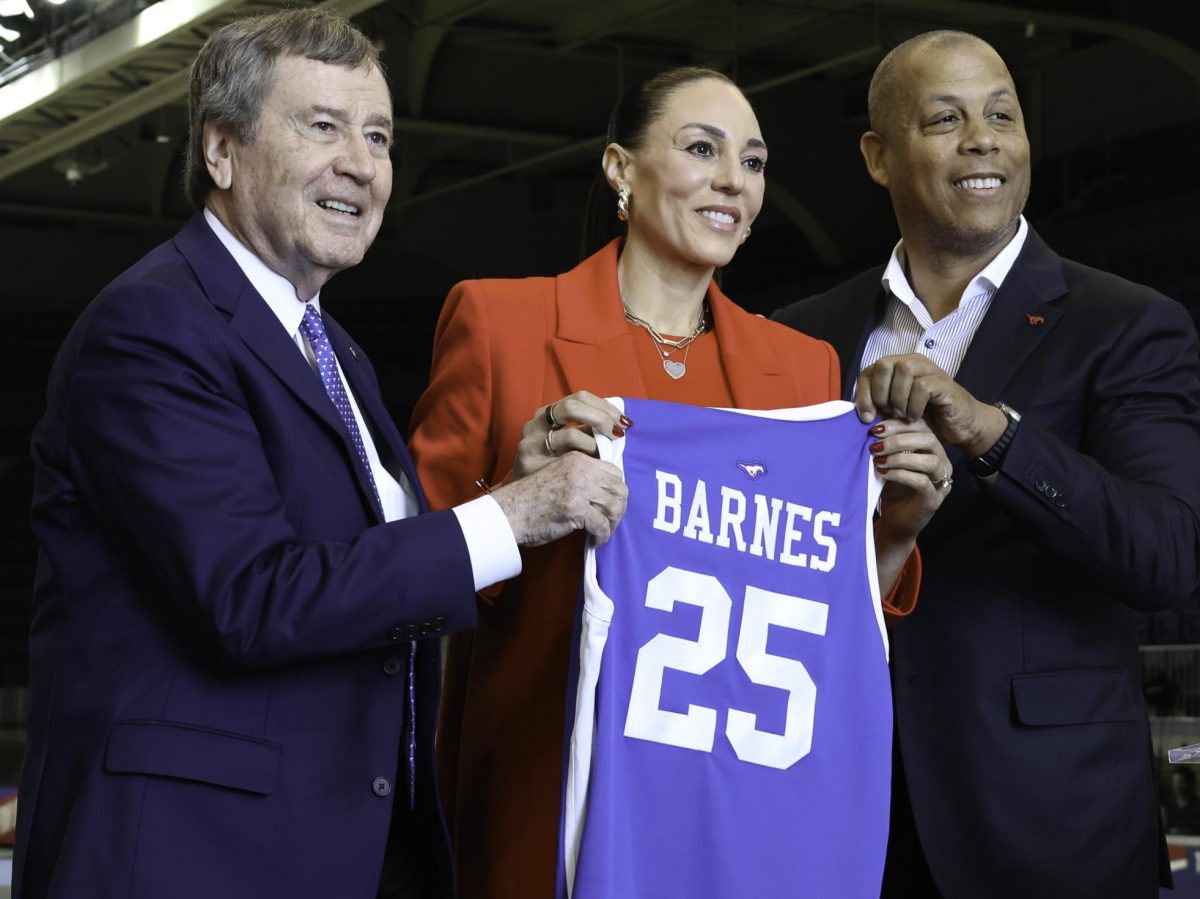Past several twists and turns through the Owen Arts Center lies a cozy blue room with windows and flashing lights, causing passing students to linger and gaze in. There are six large plasma screens on one end of the room, and along the other are clusters of tables pushed together.
This is the workspace where Creative Computation students and professors brainstorm and interact.

Not many students realize what the Creative Computing major and minor has to offer, or even know that it exists. The program teaches students how to build computer programs with compelling visuals through coding and data visualizations. For example, creative computation has been used to take a list of U.S. drone strikes as a table of data and transform it into an aesthetically pleasing digital timeline, with interactive features providing more details about every strike that appear when the user hovers a cursor over a year.
With roughly 30 declared majors and 20 minors, the Creative Computation program gives students the tools to create interactive digital art and stories such as the above example. Since its birth in 2010, the program has grown exponentially, starting with less than a handful of students and increasing by 5 percent almost every semester.
Yong Bakos, one of only three professors heading the program, explained that the Creative Computation program differs from other studies of computer science in that it requires a high level of intellect and a whole-brained approach, focusing both on analytical and aesthetic disciplines. The curriculum encourages students to solve problems in medicine, health, politics and engineering using their computer programming and design skills. For example, in the past few years, custom-built software has played a crucial role in disaster relief efforts, assisting disconnected victims with lost family members.
Bakos said that a widely held misconception about coding is that it requires a strong background in math and logic. The two primary foundations of coding are in fact design and communication writing. For this reason, the Creative Computing program attracts students across a diverse spectrum of studies, including finance, art history, journalism, studio art and dance.
Senior Katherine Habeck is a creative computation and studio art double major. She decided to pursue the creative computation major because of the opportunity it provides to combine art and technology, as well as the format of the classes.
“I like that classes are usually small focused groups, and professors are open-minded about project ideas,” she said.
Jacquelyn Elias, a freshman studying journalism and creative computation, chose to add the creative computing major because it gives students the creative freedom to decide which aspects of computer science they specifically want to focus on, which in her case is web and app design. She explained that the classes approach programming from a completely different angle than traditional computer sciences courses.
“The classes offer the foundations of programming, and they then expect you to take these foundations and apply it to whatever you want to do,” she said.
Alexander Garner is a junior finance major and creative computing minor. He originally wanted to pursue a minor in computer programming, but after taking one class with Professor Bakos he immediately changed his minor to creative computing. As a business student, Garner believes having coding skills will make him more attractive to employers because businesses today largely depend on technology for daily operations.
Zach Biehl is a sophomore dance and creative computation double major who decided to pursue creative computing because it provides opportunity to create visual programs in conjunction with dance performances to enhance audience members’ overall experience. Biehl considers the skills he is acquiring in his creative computing courses to be invaluable to his future career.
“Multimedia performances are increasingly common and incredibly effective in the dance world,” he said.
The Creative Computation program provides students with versatility in a world with high-demand for workers trained in computer programming, said Bakos. The goal behind Creative Computing’s curriculum is to provide students with the skills to create programs that will help solve university, community, and global problems.
One skill students can master under the creative computation curriculum is how to build their own apps.
Habeck, Elias, and Garner have already created their first apps. Habeck created a pedometer app for the iPhone that visualizes users’ steps in different ways; Elias created one that displays the correlation between hours of sleep and level of focus the following day; and Garner designed an app to process stock market data in unique ways.
While students in the creative computing major have yet to create an app specifically for SMU students, Professor Bakos believes there is a large amount of opportunities for that to happen in the future. But ultimately, the decision is up to the students.
“We give students the freedom to cater their project ideas toward the specific fields they want to pursue,” he said.
Habeck said that if she were ever to build an app for SMU students, it would focus on sending students notifications of events on campus, information about free food, and the sprinkler schedule.
Elias said her friends are constantly giving her requests for different app ideas. For example, a few weeks ago her friends wanted her to create an app that would display photos in group messages better than the traditional GroupMe interface. Another idea she has would be to create specific apps for different SMU organizations.
Garner’s ideas for potential SMU apps include an app designed to provide SMU students with their account information on Access, Blackboard and their class schedule. He has also thought of creating an app for prospective SMU students looking to learn more about SMU.
Elias most appreciates that the professors push students to approach programming in a creative way.
“Plus, I don’t have to take Calc II or physics for Creative Computing, which is a fabulous advantage,” Elias said.








